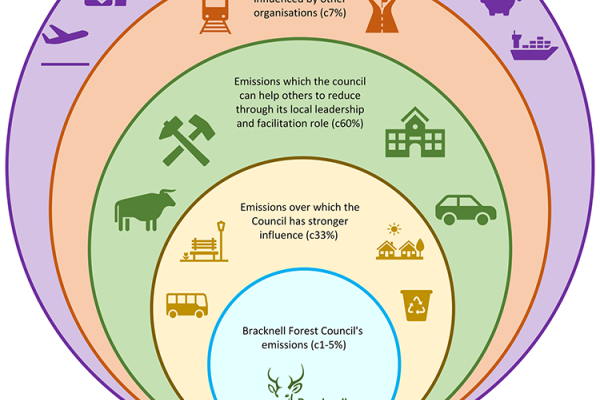The council's own emissions:
- investing in council assets
- considering climate in procurement
The council is ultimately responsible for its own emissions footprint, but it can also support wider emissions reduction in Bracknell Forest. This reflects the council’s role in local leadership, regulation, facilitation, service delivery and place-shaping.
The information below shows the varying levels of influence the council has over different emissions sources and which activities will help to tackle them. This shows how the council will need to play different roles to effectively tackle climate change.

The council's own emissions:
Stronger influence:
Helping others:
Primary influence elsewhere: lobbying national government and other key organisations
Consumption emissions: informing and engaging with stakeholders
Different actions will also be relevant at other levels of influence. This list shows the level at which they are most relevant.